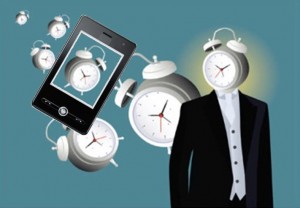Google has now released the distribution numbers for the various versions of its mobile operating system.
The figures for Google’s platform distribution over Android devices have now been released and they have shown that the most recent version of the operating system, Lollipop, has now been installed on 18.1 percent of all of the active mobile devices powered by that OS, worldwide.
Google collects its operating system distribution data by tracking the versions that visit the Play Store.
To do this, it collects the data about the version of the Android devices that visit the Google Play Store the most frequently throughout a testing period that runs for 7 consecutive days at the end of each month. It is estimated that 12.4 percent of the mobile devices powered by the operating system were a part of the data collection process during the last testing period. This is considered to be an accurate enough sample to understand the overall distribution of the various Android operating system generations.
The previous release of this data from Google showed that only 0.8 percent of Android devices were using Lollipop.
 Clearly, there has been a considerable growth since that time. That said, that figure was specific to the mobile devices running on Android Lollipop version 5.1. There was another 11.6 percent of the smartphones and tablets that were running on the Lollipop 5.0 version. During the current figures, Android versions 4.0.3 through 4.0.4 represented a total of 4.1 percent of the smartphones and tablets. That was a decline from the period before, when it had been recorded to be 5.1 percent.
Clearly, there has been a considerable growth since that time. That said, that figure was specific to the mobile devices running on Android Lollipop version 5.1. There was another 11.6 percent of the smartphones and tablets that were running on the Lollipop 5.0 version. During the current figures, Android versions 4.0.3 through 4.0.4 represented a total of 4.1 percent of the smartphones and tablets. That was a decline from the period before, when it had been recorded to be 5.1 percent.
Ice Cream Sandwich also experienced a drop, having fallen from 5.1 percent in the previous numbers, to 4.1 percent in the current ones.
Both Gingerbread version 2.3 and Froyo version 2.2 were determined to have very small figures, but are still continuing to cling to existence.
It is clear that KitKat and Lollipop are continuing to hold the majority among Android devices, but that there are still quite a few devices out there from previous years that are still operating on the operating systems from their time.
These technologies can help to shorten lines, which could be promising for many industries.
Typically speaking, people hate waiting in line, and the fact that new data is indicating that mobile payments could help to cut wait times in a meaningful way is starting to boost its appeal to retailers, quick service restaurants, events, and other industries.
Any brand that has a business model based on rapid service will find faster transactions attractive.
In Chicago at the recent Interactive Customer Experience Summit from Networld Media Group, a number of important brands – including MoneyGram International, Dunkin’ Donuts and Taco Bell – came together to discuss the issue of wait times and the ways in which they could improve the customer experience. In their discussions, one of the most common denominators was that mobile payments and m-commerce helped to reduce the amount of time that a customer was required to wait in order to complete their full interaction with the brand for that session.
Taco Bell found that their mobile payments app helped to improve the customer experience in a range of ways.
 At that fast food company, approximately 75 percent of all of the orders that are taken within their locations are customized. This, according to the Taco Bell Corp associate manager for operations, Veronica Luna. However, when the mobile app was introduced by the brand, what the company discovered was that customers had a tendency to add to their items instead of taking things away. Moreover, the average check amounts are higher among orders made by way of the app.
At that fast food company, approximately 75 percent of all of the orders that are taken within their locations are customized. This, according to the Taco Bell Corp associate manager for operations, Veronica Luna. However, when the mobile app was introduced by the brand, what the company discovered was that customers had a tendency to add to their items instead of taking things away. Moreover, the average check amounts are higher among orders made by way of the app.
Furthermore, the company made it possible for customers to speed up their own experiences within the store. The customers who used the mobile app to place their orders were able to use that same app to check in as soon as they arrived at the location. This signaled to employees that the individual had arrived, so that they could begin filling that order and serve them as soon as possible. This reduced the amount of waiting for food prep and meant that the customer never needed to wait in line to actually place the order.
Moreover, with mobile payments, it meant that the customer simply needed to receive the order and leave, instead of needing to wait at a till to complete the transaction. This type of opportunity is starting to be seen to an increasing degree by different companies that are able to reduce the amount of time that customers have to wait while in the physical store locations.
 Clearly, there has been a considerable growth since that time. That said, that figure was specific to the mobile devices running on Android Lollipop version 5.1. There was another 11.6 percent of the smartphones and tablets that were running on the Lollipop 5.0 version. During the current figures, Android versions 4.0.3 through 4.0.4 represented a total of 4.1 percent of the smartphones and tablets. That was a decline from the period before, when it had been recorded to be 5.1 percent.
Clearly, there has been a considerable growth since that time. That said, that figure was specific to the mobile devices running on Android Lollipop version 5.1. There was another 11.6 percent of the smartphones and tablets that were running on the Lollipop 5.0 version. During the current figures, Android versions 4.0.3 through 4.0.4 represented a total of 4.1 percent of the smartphones and tablets. That was a decline from the period before, when it had been recorded to be 5.1 percent.
 At that fast food company, approximately 75 percent of all of the orders that are taken within their locations are customized. This, according to the Taco Bell Corp associate manager for operations, Veronica Luna. However, when the
At that fast food company, approximately 75 percent of all of the orders that are taken within their locations are customized. This, according to the Taco Bell Corp associate manager for operations, Veronica Luna. However, when the 